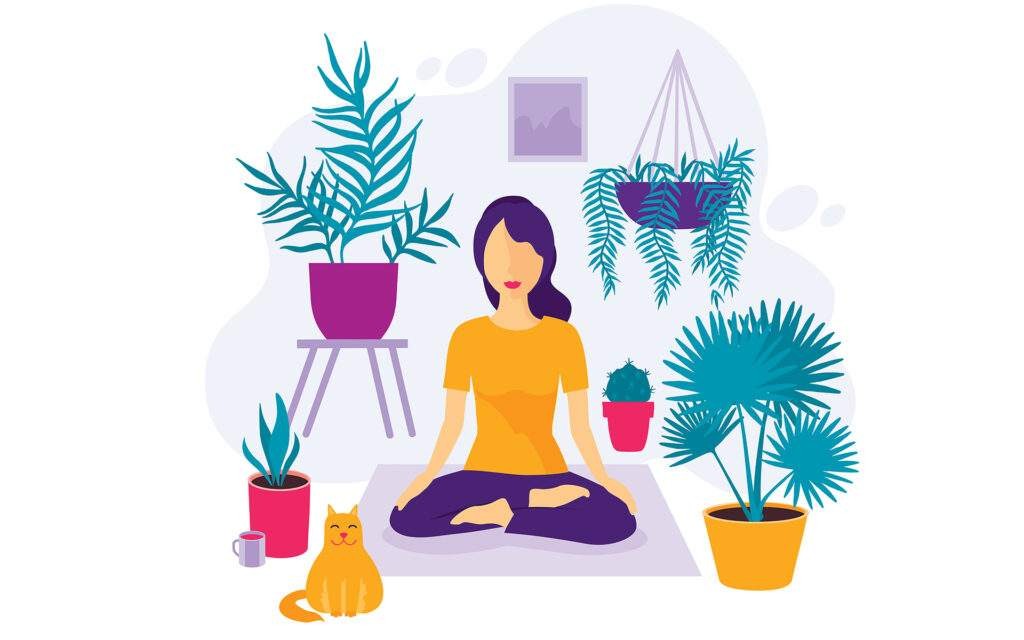Meditation offers a pathway to inner peace and improved well-being. But how do you start? This guide provides a comprehensive introduction to meditation, answering the question “How Can I Learn To Meditate” with clear steps and practical advice.
Meditation, at its core, involves training the mind to focus and redirect thoughts. Often, the breath serves as an anchor, bringing awareness to the present moment without judgment. This practice cultivates mindfulness, enhancing your ability to observe your thoughts and feelings without getting swept away by them.
Getting Started with Meditation: Simple Steps
Even beginners can learn to meditate effectively. Here’s a breakdown of the process:
1. Find a Quiet Space
Choose a calm and quiet environment where you can sit or lie down comfortably without distractions.
2. Set a Time Limit
Start with short sessions, such as 5-10 minutes, and gradually increase the duration as you become more comfortable.
3. Pay Attention to Your Body
Find a comfortable and stable posture. You can sit in a chair with your feet flat on the floor, sit cross-legged, or even lie down.
4. Focus on Your Breath
Observe the natural rhythm of your breath as it enters and leaves your body. Feel the sensation of your chest or abdomen rising and falling.
5. Acknowledge Wandering Thoughts
Your mind will inevitably wander. When you notice this, gently redirect your attention back to your breath without judgment.
6. Practice Self-Compassion
Be kind to yourself when your mind wanders. It’s a natural part of the process. Simply return your focus to your breath.
Why Learn to Meditate? The Benefits of Mindfulness
Meditation offers a wide range of benefits for both mental and physical well-being:
-
Stress Reduction: Meditation helps calm the nervous system, reducing stress and promoting relaxation.
-
Improved Focus: Regular practice enhances attention span and concentration.
-
Emotional Regulation: Meditation helps you become more aware of your emotions, allowing you to manage them more effectively.
-
Self-Awareness: Mindfulness cultivates a deeper understanding of your thoughts, feelings, and bodily sensations.
-
Better Sleep: Meditation can improve sleep quality by calming the mind and body.
-
Enhanced Resilience: Meditation helps you develop coping mechanisms for dealing with challenges.
Different Types of Meditation: Exploring Your Options
There are various meditation techniques to explore:
-
Breath Meditation: Focusing on the breath is a foundational practice for beginners.
-
Body Scan Meditation: This technique involves bringing awareness to different parts of the body, noticing sensations without judgment.
-
Walking Meditation: Mindful walking combines meditation with movement, focusing on the sensations of each step.
-
Loving-Kindness Meditation: This practice cultivates compassion and empathy for oneself and others.
Making Meditation a Habit: Tips for Consistency
- Start Small: Begin with short meditation sessions and gradually increase the duration.
- Schedule Time: Set aside a specific time each day for meditation, making it part of your routine.
- Use Reminders: Set reminders on your phone or use sticky notes to prompt you to meditate.
- Find a Teacher or Guide: Consider joining a meditation class or using guided meditation apps.
Conclusion
Learning to meditate is a journey of self-discovery and personal growth. By incorporating these simple steps and practicing regularly, you can experience the transformative power of mindfulness and unlock a greater sense of peace and well-being. Remember, consistency is key. Even a few minutes of daily meditation can make a significant difference in your life.

